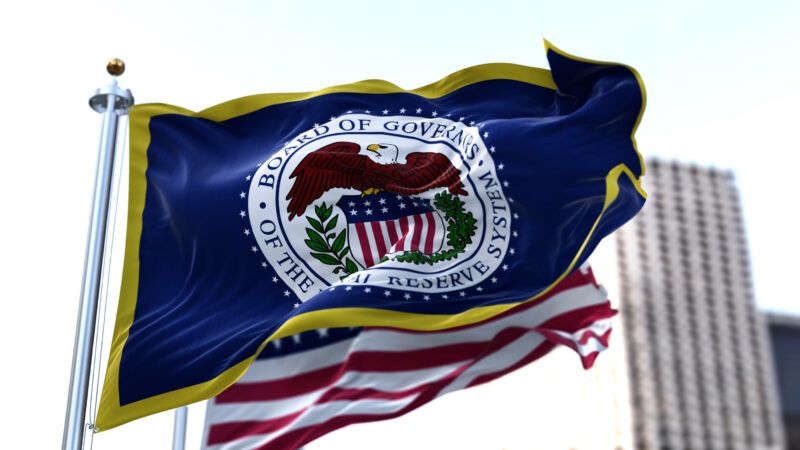Trump Is Filling the Fed with Loyalists
By installing Stephen Miran and eyeing more allies, Trump is positioning the central bank for aggressive rate cuts and a sharp break from its tradition of independence.

Council of Economics Chair Stephen Miran was confirmed as a Federal Reserve governor just before September's Federal Open Market Committee meeting. The impact was immediate—and troubling.
Miran dissented in favor of a larger rate cut, and he put a dot on the dot plot—the Fed's survey of members' interest rate expectations—that was 150 basis points lower by the end of the year. Miran wants to lower the federal funds interest rates by 200 basis points immediately, which is well outside the consensus at the Fed.
Miran wants huge interest rate cuts at a time when the stock market, cryptocurrency, and gold are at all-time highs, credit spreads are at all-time lows, the unemployment rate is only 4.3 percent, and gross domestic product just came in at 3.8 percent. His logic is that the labor market is weakening—it is, slightly—and he wants to cut interest rates to forestall a recession.
But with financial conditions so easy, and inflation hovering around three percent—above the Fed's two percent target—an interest rate cut at this juncture makes no economic sense and risks stoking significant inflation.
Miran has made statements in favor of Fed independence in the past, yet his actions now undercut that principle. President Donald Trump has explicitly called for interest rates to be lowered to 0.5 percent, he has installed his man at the Fed, and his man is doing his bidding.
This is highly unusual. In the past, it has been political conservatives who have been hard money advocates, consistently pushing for higher interest rates and for fighting inflation. Now the liberals are the inflation fighters and the conservatives believe that a politically active Federal Reserve has been blocking the White House's agenda.
One possible reason for Trump and Miran's intransigence on lower rates could be that they are trying to lower the cost of funding the U.S. government. T-bill issuance has been at an all-time high, first under former Federal Reserve Chair Janet Yellen and then under Treasury Secretary Scott Bessent. By lowering short-term interest rates, the Fed would effectively be lowering the amount of interest that the government would pay on its debt. But this is not the purpose of the Federal Reserve. The Fed is supposed to set interest rates and the money supply to equilibrate inflation and unemployment—its two mandates. Lowering the cost of funding the government is not part of the Fed's mandate.
Bessent, for his part, is waiting for long-term interest rates to drop to term out the debt and lock in lower interest rates at longer maturities. This is a dangerous game, as the Fed's actions could actually cause long-term interest rates to rise.
Trump now has one loyalist on the Board of Governors, and he will soon have more. It seems likely that Lisa Cook will be replaced, and Jerome Powell will depart as chairman in 2026 (although Powell will have the option to stay on the board). It's not hard to envision a group of Trump's Fed officials acting as a voting bloc, lowering interest rates to near zero and keeping them there even as inflationary pressures build.
This is the monetary policy of Turkish President Recep Tayyib Erdogan. It has not worked out well in Turkey, where inflation has skyrocketed and the value of its currency has plummeted.
This is the reason that central banks are supposed to be remote from political pressures. Politicians always prefer that the economy run hot to keep people employed. But a "fast" economy is not necessarily a "good" economy. During Alan Greenspan's tenure as Fed chairman from 1987 to 2006, the Fed prioritized vigilance on inflation. By contrast, the 2010s Fed focused on countering post-crisis deflation, showing far less concern about rising prices. The Powell Fed had to fight inflation in 2021–2022, and it did so incompetently.
Absent Trump, the Fed would not have cut interest rates two weeks ago, and it would not be considering future interest rate cuts. Inflation is still high, and the economy can tolerate higher interest rates just fine—there is no compelling reason to lower them. Meanwhile, the search continues for a new Fed chair, and other candidates are being considered, including former St. Louis Fed President James Bullard and BlackRock executive Rick Rieder, who probably understands the bond market better than anyone but is clearly politicking for the job by advocating a 50 basis point cut at the last meeting.
Low interest rates may be good for borrowers, but they are terrible for savers. There are trillions in money market mutual funds earning about four percent. If those yields disappear, people will be pushed into buying things like high-yield bonds or stocks, perhaps at the worst possible time.
This would be an unprecedented experiment: slashing rates while the economy is already running hot.


Show Comments (94)